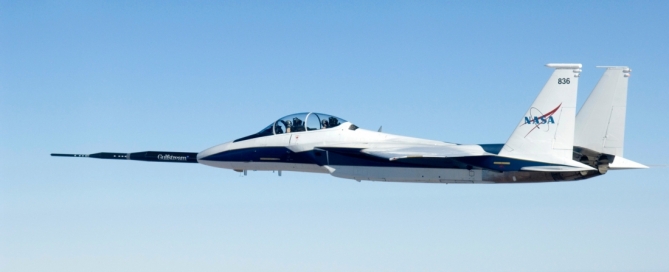Gulfstream Continues Sonic-boom Mitigation Research
Gulfstream Aerospace continues to pursue technologies that would enable building a supersonic business jet (SSBJ). The company has logged two new patents for sonic-boom mitigation technologies in the past two months alone. Queried about the new patents, a company spokeswoman told AIN, “Gulfstream has a small team committed to researching sonic-boom mitigation. We also continue to work to remove the ban on flying supersonically over land.” The Savannah, Georgia-based aircraft manufacturer’s most prominent research in this field is its Quiet Spike, a telescoping nose meant to greatly reduce or possibly eliminate the sonic boom. It has previously tested the Quiet Spike on a NASA F-15. Gulfstream Aerospace hosted a NASA F-15 in Savannah, Ga., on February 14 for an aerial demonstration of its Quite Spike telescopic nose spike installation. If Gulfstream were ever to decide to launch a supersonic business jet, it would have to employ some means of suppressing the sonic boom while flying over land. Instead of building an airplane that could exceed Mach 1 only away from land, Gulfstream envisions a design with a retractable spike on the nose that extends to change the shape of the nose and alter the impact of the sonic boom. Lab testing has shown that the spike can reduce the sound of the boom, resulting in a boom that is quieter than that of the Concorde supersonic airliner by a factor of 10,000. The spike testing on the F-15 was done to verify the structural integrity of the system, not its sonic boom suppression capability. There was some testing of the shock wave created by the spike, said a Gulfstream spokesman, but the F-15 installation won’t have much of an effect on its sonic boom. Funds
 Cessna Citation V
Cessna Citation V Embraer EMB 120 Brasilia
Embraer EMB 120 Brasilia




